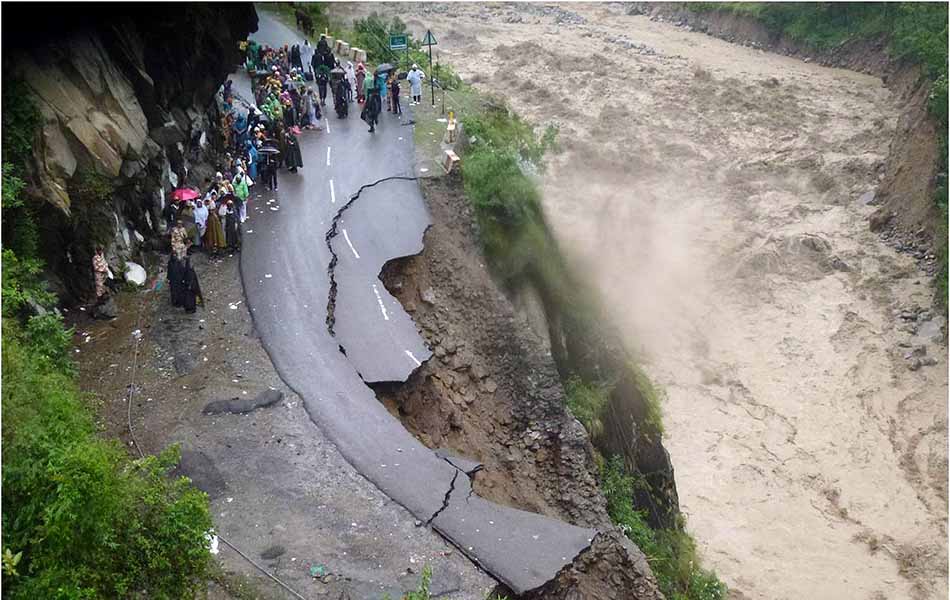7 Crore+ Customers

Affordable Premium

7 Crore+ Customers

Affordable Premium



Natural disasters are unpredictable that can cause major loss to life and property. It may take years to rehabilitate and repair the damages caused by the natural calamities.
Hence, it is essential to keep yourself updated regarding the types of natural disasters and the damages.
Keep scrolling to learn about major natural disasters in India.
Natural disasters are catastrophic events that threaten the safety and function of a community. It can damage both public and personal properties significantly.
These disasters can range from hurricanes, floods to tsunamis and avalanches. You should know that apart from natural causes, disasters can occur due to anthropogenic causes.
Activities like deforestation, agricultural practices, mining, etc., can cause landslides. In addition, wildfires can again damage the natural habitat of plants and animals.
Let’s check what the types of natural disasters are to understand this concept better.
There are 5 major types of natural disasters. These are -
Changes in the above or underneath the earth's surface cause geological disasters. The effects of natural disasters due to tectonic plates are unpredictable and beyond human control. Earthquakes, volcanic eruptions, landslides, avalanches, etc., are examples of geological disasters.
Hydrological disasters are caused due to sudden changes in the quality or distribution of water below the earth’s surface or atmospheric conditions. Flood and drought both fall under hydrological disasters. These disasters can cause harm to agriculture and properties. Limnic eruption, Tsunami, Volcano, etc., are examples of Hydrological disasters.
Meteorological disasters are mainly caused by extreme weather conditions such as drought, snow, and rain. These disasters affect the weather forming process and atmospheric conditions. Examples of meteorological disasters include blizzards, drought, cold waves, tornadoes, cyclonic storms, etc.
This includes disasters caused due to asteroids, meteors, and solar flares.
Natural disasters like drought and lightning can lead to wildfires. However, many humans also start fires in forests to create space for agricultural land.
Now let’s check what causes natural disasters. This will help you in implementing the needed disaster management techniques.
The major causes of natural disaster include -
Now let’s have a look at the effects of natural disasters in India.
The common effects of natural disasters include -
India ranks among the three countries that bore the impact of natural disasters in recent years. Nearly 108 crore people were affected, while 79,732 people have lost their lives in these natural incidences in 2021.
Now let’s check the list of major natural disasters in India that occurred over the year and their impact.
Here is a list of the major disasters that have taken place in India up till now.
Kerala received 310mm of heavy rainfall in the first 48 hours. This led to the overflowing of dams.
Continuous rainfall and swelling of the Jhelum river caused a major flood in Kashmir. It caused damage worth ₹6000 crores.
A huge cloudburst caused landslides and flash floods in Uttarakhand from 14th June to 17th June. More than 1 lakh pilgrims were struck in the Kedarnath shrine.
An earthquake with a magnitude of 9.1 to 9.3 caused this disaster. The tsunami had a major impact on people’s lives. Most households in India, Andaman 7 Nicobar Islands and Sri Lanka were affected.
The Richter scale showed 7.6 magnitudes. It damaged nearly 4 lakh homes. This earthquake lasted for 120 seconds.
It was marked as the most dangerous tropical cyclone in the North Indian ocean. The cyclone moved at an intensity of 260 km/h. It destroyed nearly 2.57 lakh houses.
Hit the districts of Latur and Osmanabad of Maharashtra with its epicentre in Killari, the 1993 Latur Earthquake was measured at 6.4 on the Richter scale. It was classified as ‘Severe’ as the hypocentre of the tremor was 10 km deep.
Starting in 1876 in south and south-western India in Bombay (presently Mumbai) and Madras (presently Chennai), the Great Famine was an after-effect of severe drought. This led to crop failure in the Deccan Plateau. Later in 1877, it affected the central and north-western parts of India.
Also referred to as the fourth-deadliest tropical cyclone in the world, it battered the port city of Coringa on the southeastern coast of Andhra Pradesh. Besides the massive loss of lives, this 40-feet high storm surge wrecked around 20,000 vessels.
It majorly damaged the low-lying areas in the south of Calcutta (presently Kolkata) in the Ganges River Delta. Accompanied by a storm surge of up to 40 feet along with 381 mm rainfall in 6 hours, it tracked nearly 330 km inland.
This famine was caused due to a failed monsoon in 1769 and continued for two centuries. The British East India company’s exploitive policy and weather conditions lead to this disaster.
Since it is impossible to stop the occurrence of natural disasters, it is crucial to find ways to alleviate the adverse effects
These are some methods to reduce the effects of major natural disasters in India -
The dos have been already mentioned under the preventive measures. So now, let’s check at the don'ts.
Follow these measures to protect yourself from the major impact caused by natural disasters. However, a catastrophe causes major damages to property and livestock. Managing the repair cost and funds can be problematic for many.
In this regard, insuring the valuables would compensate for the losses.
These are some insurance policies individuals residing in natural disaster-prone areas should check.
Additionally, individuals can check disaster specific insurance policies for a sustainable solution.
There has been much technological advancement to calculate the occurrence of natural calamities. However, preventing the damages caused by these calamities is impossible.
Hence, detailed knowledge of the types of natural disasters and the ways of disaster management can help individuals combat such situations better. In addition, check the weather forecast or radio for updates on disasters in India.